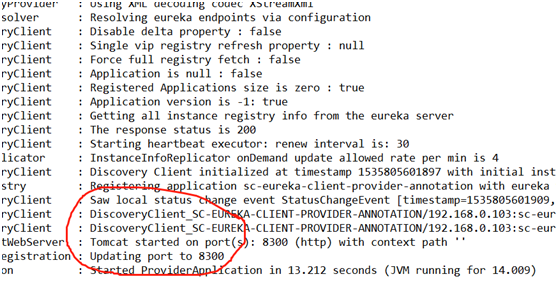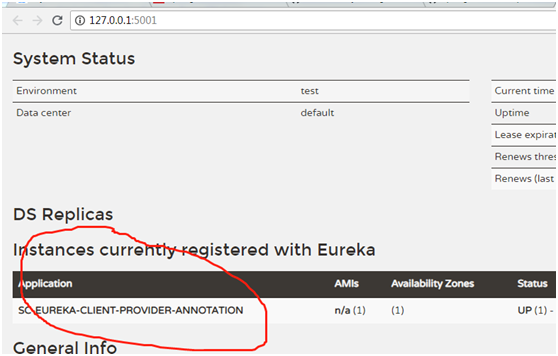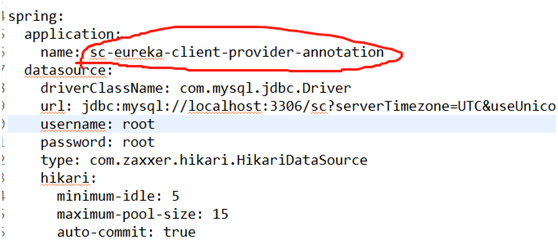1、上一篇学习了服务提供者provider,但是并不是单单就学习了服务提供者。中间还穿插使用了Hikari数据源和spring cloud整合mybatis。但是上篇使用mybatis时还是沿用了老的方式,需要配置mapper对应的xml文件。先来看看上篇使用mybatis的主要步骤
一、 pom.xml文件引用
<dependency>
<groupId>org.mybatis</groupId>
<artifactId>mybatis-spring</artifactId>
<version>1.3.2</version>
</dependency>
<dependency>
<groupId>org.mybatis.spring.boot</groupId>
<artifactId>mybatis-spring-boot-starter</artifactId>
<version>1.3.2</version>
</dependency>
二、application.yml配置文件加入mybtias配置项
mybatis: mapperLocations: classpath:sc/provider/dao/*.xml #configLocation: classpath:mybatis-config.xml
三、编写mapper文件user-mapper.xml
<?xml version="1.0" encoding="UTF-8" ?> <!DOCTYPE mapper PUBLIC "-//mybatis.org//DTD Mapper 3.0//EN" "http://mybatis.org/dtd/mybatis-3-mapper.dtd" > <mapper namespace="sc.provider.dao.UserDao" > <select id="getUser" parameterType="java.lang.Long" resultType="sc.provider.model.User"> select id, userName, age, position from t_user where id = #{id,jdbcType=INTEGER} </select> <select id="listUser" resultType="sc.provider.model.User"> select id, userName, age, position from t_user </select> <insert id="addUser" parameterType="sc.provider.model.User"> insert into t_user ( id, userName, age, position ) values ( #{id,jdbcType=INTEGER}, #{userName,jdbcType=VARCHAR}, #{age,jdbcType=INTEGER}, #{position,jdbcType=VARCHAR} ) </insert> <update id="updateUser" parameterType="sc.provider.model.User"> update t_user set userName = #{userName,jdbcType=VARCHAR}, age = #{age,jdbcType=INTEGER}, position = #{position,jdbcType=VARCHAR} where id = #{id,jdbcType=INTEGER} </update> <delete id="deleteUser" parameterType="java.lang.Long"> delete from t_user where id = #{id,jdbcType=INTEGER} </delete> </mapper>
四、编写UserDao.java
package sc.provider.dao; import java.util.List; import sc.provider.model.User; public interface UserDao { User getUser(Long id); List<User> listUser(); int addUser(User user); int updateUser(User user); int deleteUser(Long id); }
五、 在ProviderApplication.java添加@MapperScan(basePackages="sc.provider.dao")
经过上面五个步骤才能使用mybatis。本篇将和大家看看不能简化spring cloud 整合mybatis的步骤(在sc-eureka-client-provider工程上改造)
一、 依赖必不可少
<dependency>
<groupId>org.mybatis</groupId>
<artifactId>mybatis-spring</artifactId>
<version>1.3.2</version>
</dependency>
<dependency>
<groupId>org.mybatis.spring.boot</groupId>
<artifactId>mybatis-spring-boot-starter</artifactId>
<version>1.3.2</version>
</dependency>
二、 删除application.yml关于mybatis的配置
三、 删除mapper文件user-mapper.xml文件
四、改造UserDao.java类
package sc.provider.dao; import java.util.List; import org.apache.ibatis.annotations.Delete; import org.apache.ibatis.annotations.Insert; import org.apache.ibatis.annotations.Mapper; import org.apache.ibatis.annotations.Select; import org.apache.ibatis.annotations.Update; import sc.provider.model.User; @Mapper public interface UserDao { @Select(value="select id, userName, age, position from t_user where id = #{id,jdbcType=INTEGER}") User getUser(Long id); @Select(value="select id, userName, age, position from t_user") List<User> listUser(); @Insert(value="insert into t_user (id, userName, age, position) values ( #{id,jdbcType=INTEGER},#{userName,jdbcType=VARCHAR},#{age,jdbcType=INTEGER},#{position,jdbcType=VARCHAR})") int addUser(User user); @Update(value="update t_user set userName = #{userName,jdbcType=VARCHAR},age = #{age,jdbcType=INTEGER},position = #{position,jdbcType=VARCHAR} where id = #{id,jdbcType=INTEGER}") int updateUser(User user); @Delete(value=" delete from t_user where id = #{id,jdbcType=INTEGER}") int deleteUser(Long id); }
五、 @MapperScan注解必不可少
package sc.provider; import org.mybatis.spring.annotation.MapperScan; import org.springframework.boot.SpringApplication; import org.springframework.boot.autoconfigure.SpringBootApplication; import org.springframework.cloud.netflix.eureka.EnableEurekaClient; @SpringBootApplication @EnableEurekaClient @MapperScan(basePackages="sc.provider.dao") public class ProviderApplication { public static void main(String[] args) { SpringApplication.run(ProviderApplication.class, args); } }
经过以上步骤就把使用xml方式的mybatis改造成使用annotation方式的mybatis了。
2、启动注册中心sc-eureka-server,启动sc-eureka-client-provider-annotation(使用sc-eureka-client-provider项目改造),验证是否改造成功
方式一:

方式二:

圈住的名字是在application.yml配置的

3、使用postman方法相应restful接口,这里就不一一访问了,可以参考上一篇文章的访问方式
添加:
http://127.0.0.1:8300/user/addUser
查询:
http://127.0.0.1:8300/user/getUser/4
列表:
http://127.0.0.1:8300/user/listUser
更新:
http://127.0.0.1:8300/user/updateUser
删除:
http://127.0.0.1:8300/user/deleteUser/2